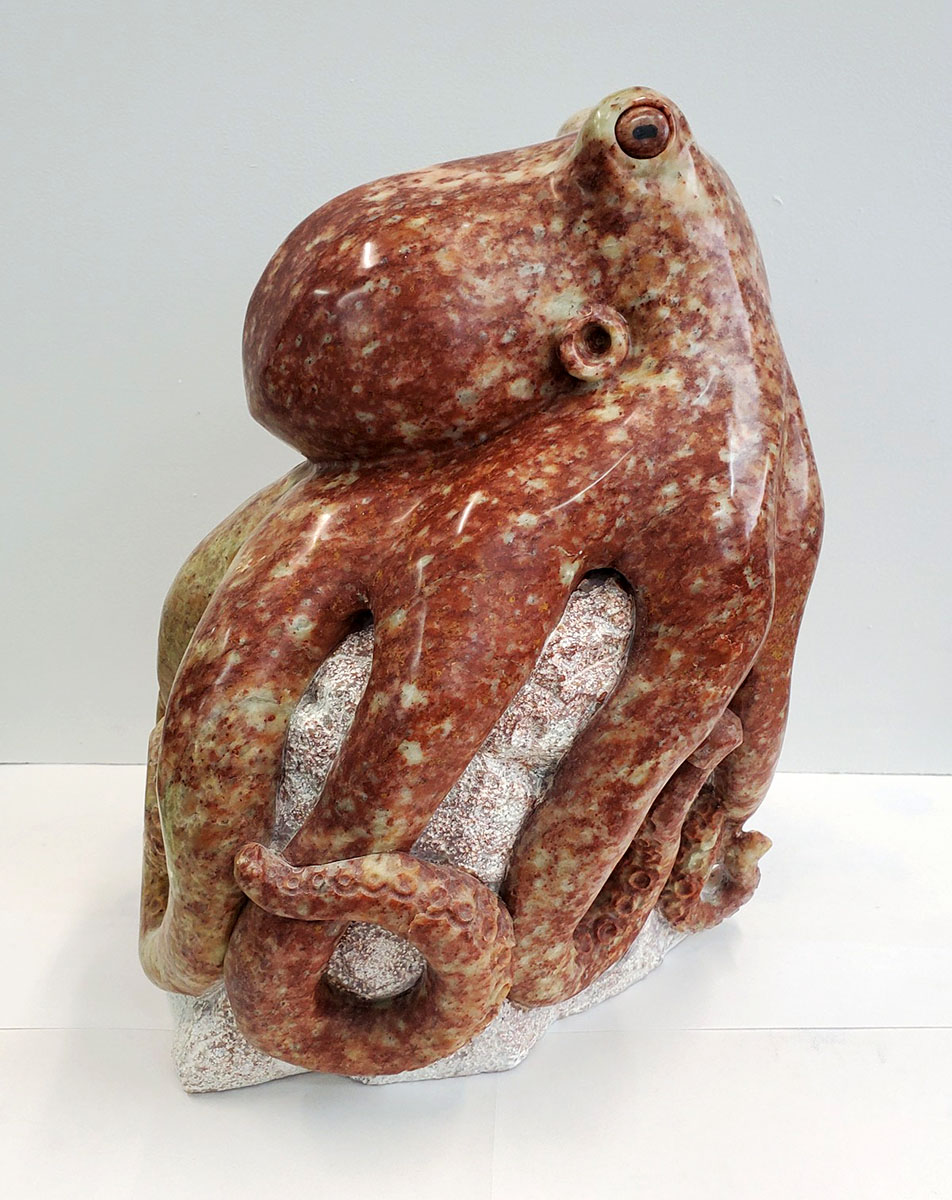Initially, stone carving was believed to have been created in the Paleolithic era – 10,000 BC.
However, there have been subsequent discoveries, one of which was the stone sculpture – the Venus of Hohle Fels, which was discovered in southwestern Germany in 2008 and was made between 33,000 and 38,000 years ago. Another known ancient art, is a set of zigzags carved on a mussel shell found in Trinil, Indonesia, dating back to 540,000 years ago and is interpreted as the work of Homo erectus. And even earlier, a 73,000-year-old hashtag-like mark appears to be a doodle made by early Homo sapiens in the Blombos cave in South Africa.
Petroglyphs (also called rock engravings) are created by removing part of a rock surface, which remains in situ, with actions such as incising, pecking, carving, and abrading. These markings were created using antlers for soft stone, and abrasives to rub on stone. Hammerstones and course stone tools were used for pick dressing, and the grinding of ‘cupmarks’ for rough hewing of stone. In the Neolithic people era flint was used to carve and incise patterns into stone. Coloured pigments were then rubbed into the lines to make them stand out, and many of the lines in these ancient workings seem to have been reworked several times.
In Inuit art today, stone is the most popular carving material as it is very adaptable. Artists can work it to almost any size and shape. As stone also comes in a variety of colours, from grey and white and black to green and blue-green, the finished carvings can be representative of the image, or subject.
Stone carving is the oldest skilled trade that comes in a 3-dimensional art form providing an opportunity for artistic expression, income generation, hobby satisfaction, and creativity. With today’s technical advancements cutting stone is accomplished with water erosion and diamond saw cutting, although there are still artists using chisels and hammers.
There are two distinct professionals in stone carving, or construction stonemasons, who cut and prepare stone for buildings. And are divided into banker masons, who are based in workshops, crafting, and shaping blocks of stone. And who also texture and polish stone—a technique called dressing. And fixer masons, who build the dressed stone on site, following the architect’s plan. Monumental or memorial masonry is a separate but related skill, which involves making memorials for the funeral industry. These masons carve figures and patterns.
The hardest stone frequently carved is granite, at about 8 on the Mohs scale. It is the most durable of sculptural stones and, correspondingly, an extremely difficult stone to work. Basalt columns, being even harder than the granite, are less frequently carved.
The largest stone carving in the world is the statue of the God of Longevity which measures 200 m (656 ft) wide and 218 m (715 ft) high and is on the northwest side of the peak, Guimeng, in the Meng Shan mountains near Pingyi, Shandong, China.
There are eight different stone working techniques and processes:
- Hand Carving.
- Letter Cutting.
- Sand Blasting.
- Diamond Cutting.
- Stone Polishing.
- Flaming.
- Water Jet Cutting.
- CNC Machining.
If you would like to try your hand at carving, then sign up for our Soapstone Sculpture Workshop with Vance Theoret

